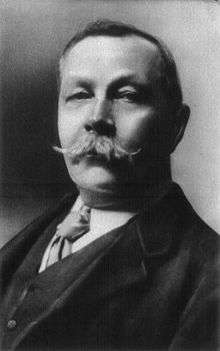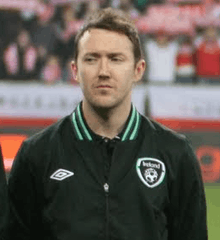Irish-Scots
| Total population | |
|---|---|
|
49,428 Irish-born (as stated in the 2001 Census) 1,500,000 Irish ancestry (estimate) | |
| Regions with significant populations | |
| Coatbridge, Edinburgh, Glasgow, Dundee, Inverclyde | |
| Languages | |
| English (Irish/Scottish), Irish, Scottish Gaelic | |
| Religion | |
| Predominantly Roman Catholic, some Protestant | |
| Related ethnic groups | |
| Scottish, Irish, Gaels; Welsh, Manx, Cornish, Bretons, Scots-Irish, Ulster Scots |
Irish-Scots are people in Scotland who are of immediate or traceably distinct Irish ancestry. Although migration between Ireland and Scotland has an established history (both ways) owing to their close proximity, Irish migration to Scotland increased in the nineteenth century, and was particularly strong following the Great Famine. In this period, the Irish typically settled in the cities such as Edinburgh, Dundee, Glasgow, towns like Coatbridge and industrial areas such as Fife.
In the United Kingdom Census 2001, almost 50,000 people, fewer than 1% of the population in Scotland, identified their ethnicity as being full or partial Irish descent.[1] With centuries of heavy Irish immigration to Scotland, it is generally believed to be over 1.5 million people may have some Irish blood even if very distantly. The low ethnic Irish figure declared could be attributed to confusion between ethnicity and nationality. The same census states the number of Catholics in Scotland as approximately only 804,000 or 15.9% of the population, with the vast majority being of Irish background. The term Irish-Scots should not be confused with Ulster-Scots people (sometimes known as Scots-Irish), a term used to denote those in the Irish province of Ulster who are descended from Lowland Scots who settled there in large numbers during the Ulster Plantation and subsequently.
Famous Irish-Scots include socialist revolutionary James Connolly, author Sir Arthur Conan Doyle, footballers Aiden McGeady, Ray Houghton, Owen Coyle and James McCarthy, politician George Galloway, actors Sean Connery, Brian Cox, Peter Capaldi, Gerard Butler, musicians Gerry Rafferty, Maggie Reilly, Jimme O'Neill, Claire Grogan, Fran Healy and comedians Billy Connolly and Frankie Boyle.
Background
Attitudes to the waves of immigration from Ireland to Scotland were mixed, as evidenced by the following quotations:
- "In our opinion, the Irish have as much right to come to this country to better their lives as the Scots and English have to go to Ireland or any other part of Britain for the same reason. Let us hear no more complaints about the influx of Irish having a bad effect on Scotland unless it is to do something about tackling the problems which caused the emigration."
- The Glasgow Courier, 1830
- "The immigration of such a number of people from the lowest class and with no education will have a bad effect on the population. So far, living among the Scots does not seem to have improved the Irish, but the native Scots who live among the Irish have got worse. It is difficult to imagine the effect the Irish immigrants will have upon the morals and habits of the Scottish people."
Difficulties also arose due to differences between the largely Catholic immigrants and the predominantly Protestant native Scots population. Towards the end of the eighteenth century, before the Irish began arriving in large numbers it was reported that, in Glasgow, there were only thirty-nine Catholics, but forty-three anti-Catholic clubs (dead link see ).
In the UK census of 2001, the new category "Irish" was added to the list of ethnic background. In Scotland, results showed that 49,428 (0.98%), fewer than 1% of the population, self-described as being of Irish background.
The Irish-Scots were instrumental in the formation of Hibernian F.C. in Edinburgh in 1875.[2] There followed in 1888 in Glasgow, Celtic Football Club, and later Dundee United F.C. (originally known as Dundee Hibernian), as well as numerous smaller teams. These teams were originally formed to provide recreational facilities for the Irish immigrants.
Scots and Irish
The terms Scots and Irish, while they have a settled meaning today, are not always readily distinguished. Sellar & Yeatman's spoof history 1066 and All That highlighted the confusion that these words can cause when used to refer to the past :
| “ | The Scots (originally Irish, but by now Scots) were at this time inhabiting Ireland, having driven the Irish (Picts) out of Scotland; while the Picts (originally Scots) were now Irish (living in brackets) and vice versa. It is essential to keep these distinctions clearly in mind (and verce visa). | ” |
See also
- The Irish Scots and the Scotch-Irish – John C. Linehan (ISBN 0-7884-0788-0)
References
External links
- Material in "Mi Deireadh Fomhair" (October 2004) includes the full text of the song "Hello! Patsy Fagan" (or "The Dacent Irish Boy") by T. P. Keenan, describing the experiences of an Irish immigrant in Glasgow
- Audio podcast about the history of Irish radicalism in Scotland









.jpg)



.jpg)